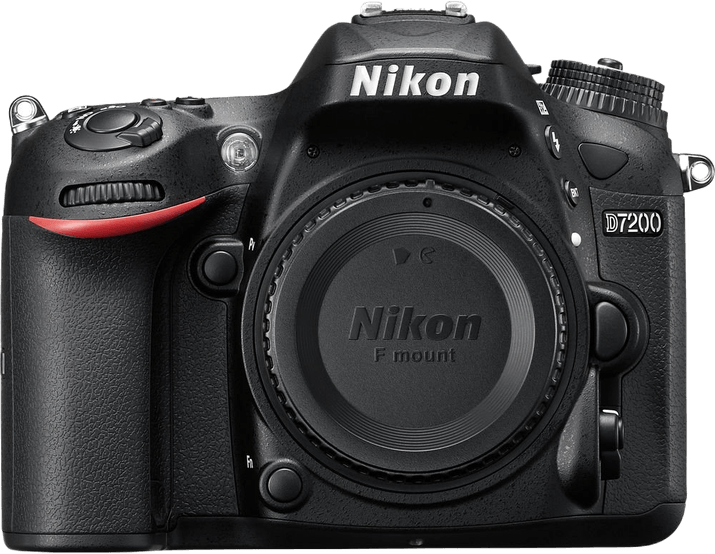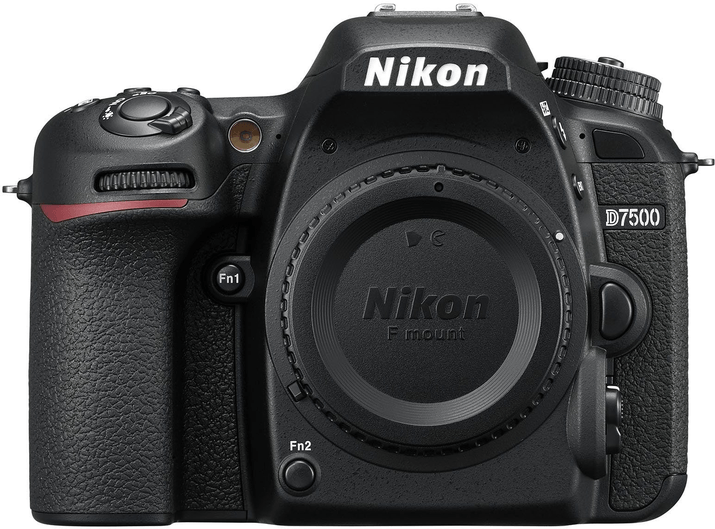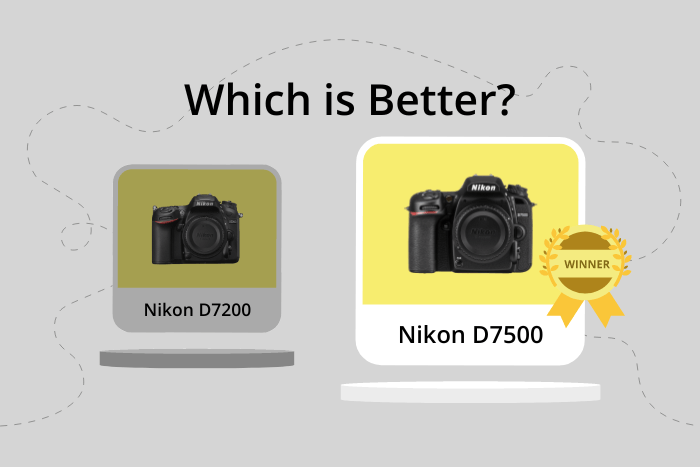Nikon D7200 vs D7500 Comparison
Nikon D7200

Nikon D7500

The Nikon D7500 outperforms the Nikon D7200 with a score of 70/100 compared to the D7200’s 68/100. Both cameras are DSLRs released in 2015 and 2017, respectively, with a similar launch price of $1200 for the D7200 and $1250 for the D7500. They share nearly identical dimensions, with the D7500 being slightly lighter at 720g, compared to the D7200’s 765g.
The D7500’s higher score reflects its better performance, likely due to its newer release year. However, the D7200 still offers great value with its lower launch price. When considering these two cameras, it’s essential to weigh the importance of performance against cost. Ultimately, the choice between the Nikon D7200 and D7500 depends on individual preferences and priorities.
Nikon D7200 vs D7500 Overview and Optics
The Nikon D7200 wins in the optics comparison with a score of 71/100, while the Nikon D7500 scores slightly lower at 68/100. Both cameras share some common specifications, such as the CMOS sensor type, APS-C sensor size, Nikon F DX lens mount, and the lack of image stabilization.
The D7200 surpasses the D7500 in terms of megapixels, boasting 24.2 compared to the D7500’s 20.9. This results in higher resolution images, which can be beneficial for photographers who print large images or heavily crop their photos. Additionally, the D7200 has a higher DXOMARK score for the sensor at 87, compared to the D7500’s 86. This indicates that the D7200’s sensor may perform slightly better in certain situations, such as low-light conditions.
On the other hand, the D7500 excels in shooting speed, with 8 frames per second compared to the D7200’s 6 frames per second. This makes the D7500 more suitable for capturing fast-moving subjects, such as sports or wildlife photography. The D7500 also has a more advanced processor, the Expeed 5, which provides faster image processing and improved noise reduction compared to the D7200’s Expeed 4 processor.
In the optics comparison, the Nikon D7200 comes out as the winner due to its higher megapixel count and slightly better sensor performance. However, the Nikon D7500 should not be overlooked, as its faster shooting speed and more advanced processor make it a strong contender for certain photography styles. Ultimately, the choice between these two cameras depends on the individual photographer’s preferences and needs.
Nikon D7200 vs D7500 Video Performance
The Nikon D7200 and Nikon D7500 both have a video score of 70/100, indicating that they perform equally in terms of video capabilities. Both cameras share common features such as Full HD video resolution, time-lapse functionality, and a maximum video frame rate of 60fps for the D7200 and 30fps for the D7500.
The D7500 stands out with its 4K video resolution, offering higher quality and more detailed footage compared to the D7200’s Full HD resolution. The D7500’s maximum video dimensions are 3840 x 2160, which is double the D7200’s 1920 x 1080. This difference allows the D7500 to produce sharper and more visually appealing videos.
However, the D7200 has a higher maximum video frame rate of 60fps, compared to the D7500’s 30fps. This means that the D7200 can capture smoother footage, particularly in fast-moving scenes or when recording sports and action events. This advantage may be significant for some users who prioritize smooth motion over higher resolution.
Both the Nikon D7200 and D7500 have their strengths and weaknesses when it comes to video capabilities. The D7500 excels in providing 4K resolution for more detailed and sharper footage, while the D7200 performs better in capturing smooth motion with its higher maximum frame rate. Users should consider their specific needs and preferences when choosing between these two cameras, as each offers unique advantages in terms of video performance.
Nikon D7200 vs D7500 Features and Benefits
The Nikon D7500 emerges as the winner in the features comparison, with a score of 83/100, while the Nikon D7200 scores 59/100. Both cameras share some common specifications, such as a 3.2-inch screen size, no GPS, and WIFI connectivity. However, the D7500 outperforms the D7200 in several aspects.
The D7500 has a touchscreen, making it more user-friendly and efficient in navigating menus and settings. It also features a flip screen, providing flexibility for shooting at various angles and enhancing the camera’s usability in different situations. Additionally, the D7500 includes Bluetooth connectivity, allowing seamless transfer of images to a smartphone or other devices, which is a useful feature for photographers who need to share their work quickly.
On the other hand, the D7200 has a higher screen resolution of 1,228,800 dots compared to the D7500’s 922,000 dots. This higher resolution may provide a clearer and more detailed image preview, which can be beneficial for photographers who want to ensure the quality of their shots before capturing them.
Taking these points into account, the Nikon D7500 is the better camera in terms of features, with its touchscreen, flip screen, and Bluetooth connectivity. However, the Nikon D7200 has a slightly better screen resolution, which may be an advantage for some photographers. The choice between these two cameras ultimately depends on the user’s preferences and needs, but the D7500 offers more advanced features that improve the overall shooting experience.
Nikon D7200 vs D7500 Storage and Battery
The Nikon D7200 outperforms the Nikon D7500 in storage and battery with a score of 79/100 compared to the D7500’s 43/100. Both cameras accept SD, SDHC, and SDXC memory cards, but the D7200 has two memory card slots while the D7500 only has one.
The D7200’s battery life of 1110 shots surpasses the D7500’s 950 shots. Both cameras use a similar battery type, with the D7200 using the EN-EL15 and the D7500 using the EN-EL15a. Neither camera offers USB charging.
The D7200’s dual memory card slots and longer battery life contribute to its higher score in storage and battery. The D7500, however, has a slightly updated battery type, but it does not significantly impact its overall performance in this category.
Considering the storage and battery aspects, the Nikon D7200 proves to be the better choice due to its superior performance in both areas. The Nikon D7500 may still be a viable option for some users, but it falls short when compared to the D7200 in these particular features.
Nikon D7200 vs D7500 Alternatives
Still not sure which camera is right for you? Check out these related camera comparisons to inspire you:

